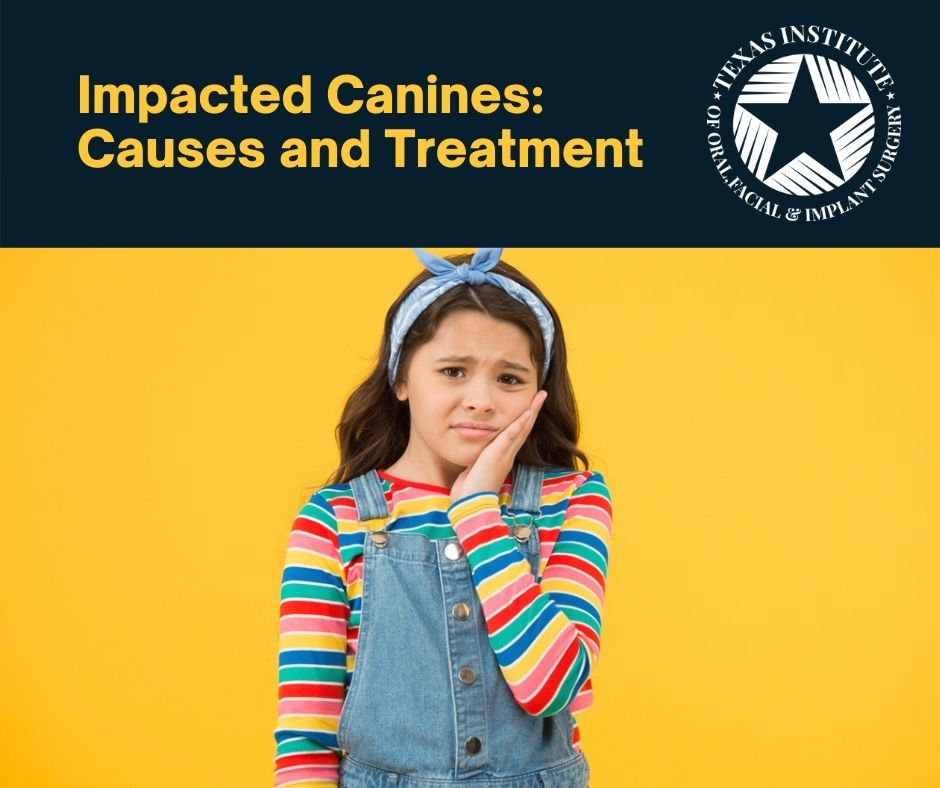
Canines, cuspids, and “eye teeth.” Each of these names refer to those four more pointed teeth that are located in the corners of our smile (just past our front incisors). Their shape makes them ideal for cutting and tearing into firmer food textures, such as meat.
In a typical scenario, permanent adult canines erupt between the ages of 9-12, with upper canines being some of the last adult teeth to come in. But if these teeth fail to erupt properly in line with its neighbors, it could become partially or fully impacted. It’s estimated that around 2% of people will suffer from impacted canines.
What Causes Impacted Canines?
Any tooth can become impacted if it doesn’t have adequate room to erupt. Perhaps your child lost a baby tooth prematurely, causing the neighboring teeth to tilt inward. Or maybe they have a narrow jaw that restricts adequate spacing for larger adult teeth. As a result, the canine either becomes impacted up into the bone or may even partially erupt much higher up through the gum tissues, above the other teeth.
These teeth have some of the longest, thickest roots of all teeth in the mouth. Without professional intervention, the tooth will not be able to come down into a proper biting relationship (occlusion) with other teeth in your mouth.
Impacted Canine Treatment
The typical protocol for impacted canines is to uncover part of the tooth’s crown (which is the portion of tooth you typically see when you’re smiling.) At that point an orthodontic appliance can be affixed, so that the tooth can be guided downward into the appropriate position.
Unfortunately, the longer treatment is delayed, the more complex it will become. Early attention is essential.
Request a Consultation
Contact Texas Institute of Oral, Facial & Implant Surgery to learn more about how we can help.



